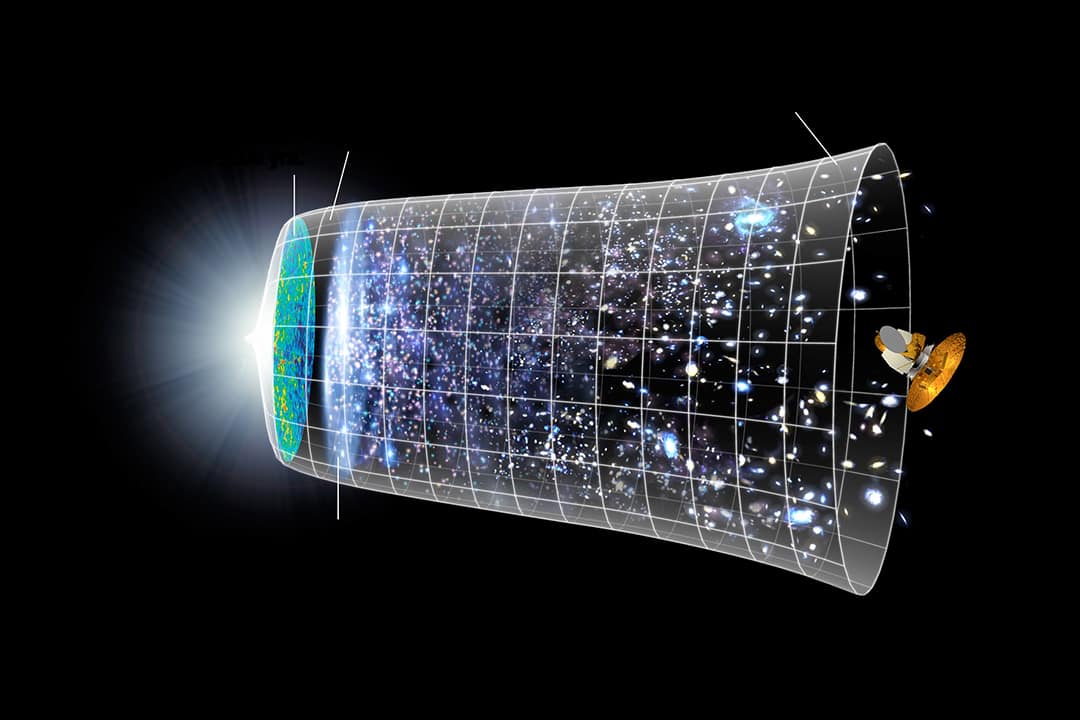The oldest evidence of Homo sapiens — the species to which modern humans belong — is around 300,000 years old. Scientists estimate the Earth itself to be around 4.5 billion years old and the entire universe to be around 13.8 billion years old.
Clearly, a lot has happened between the existence of humans and the beginnings of the universe, including the beginning of the Earth. We are but a blink in the lifetime of the universe — so, naturally, humans have made the origins of the universe one of the great questions of cosmology.
How did the universe start? How will it end? Those are the defining questions.
Starting with a bang
While the latter question remains ambiguous, the former has been explained by a well-supported theory called the Big Bang.
Astrophysicists believe that the universe originated from a single, hot, dense point that expanded outward. This theory was first proposed in 1927 by theoretical physicist Georges Lemaître and proven after astronomer Edwin Hubble observed that galaxies were moving farther away from us in all directions. The universe was — and is — expanding.
As something moves farther away, the lightwaves emitted by that object stretch and become longer, moving toward the lower end of the electromagnetic spectrum. This is exemplified through a visible red-shift: red light representing a less energetic form of light. Similarly, a blue-shift would indicate that an object is moving toward us.
Hubble found that over time, the light emitted from galaxies we’re able to observe stretched and appeared red-shifted, which meant that the universe was expanding.
Working backward, the observation of the universe as a uniformly expanding and cooling system suggests that at some point, expansion must have started at a single hot and infinitely dense point, which scientists call the singularity.
The discovery of cosmic microwave background (CMB) radiation has further supported this theory. Astrophysicists consider CMB a left-over radiation echo — detected everywhere as a faint glow of light — from the Big Bang and is the oldest light wave scientists can detect.
This is similar to how some metals, after being heated, will continue to glow for a short time even when the heat source is gone. The existence of CMB as a leftover from the extremely energetic origin of the universe and its uniformity throughout the universe follows the predictions of the Big Bang theory.
Also, observations by both Hubble and other scientists showed that far-away galaxies were not only moving away but accelerating. This was unexpected, as many scientists expected the expansion rate to slow down because of gravitational forces that attract things with mass to each other, like the Moon to the Earth.
So, what exactly is making the universe expand? Will the universe simply continue to expand?
Ending with a crunch, rip, or freeze?
Those questions start an exploration into the end of the universe.
Essentially, there seem to be two major forces interacting in the expansion of the universe. The first of these is gravity, an attractive force — which suggests that the universe should resist expansion.
But, as evidenced by the moving galaxies, there also appears to be a force that is causing the universe to expand. Scientists believe that this expanding force may be caused by dark energy, which is essentially a mystery force. Scientists are fairly confident dark energy exists because of discrepancies that cannot be explained otherwise, like the universe’s accelerated expansion. The acceleration of the universe’s expansion suggests that the force generated by dark energy may be increasing as the universe expands.
So, there are mainly three scenarios that can happen with this struggle between dark energy and gravity.
Gravity could be stronger, in which case, instead of the universe expanding forever, it must eventually crunch together into a point much like the singularity at the beginning of the Big Bang. The temperature would increase and atoms would collapse as the universe contracted. This ending is fittingly called the Big Crunch.
Additionally, if the universe could crunch back together, that also adds the possibility that we live in an oscillating universe that expands and crunches back together, erasing its past each time. This theory is called the Big Bounce.
However, if dark energy is the far greater force, the universe could simply expand until atoms themselves are ripped apart as any gravitational and other fundamental forces that hold matter together get completely overwhelmed. This ending is called the Big Rip.
Currently, most scientists accept something called the Big Freeze to be the most likely scenario. In this scenario, the universe would continue to expand and cool until it simply runs out of energy, so that it cannot support movement anymore, reaching a temperature of near absolute zero when matter stops moving. Without movement, objects in the universe would have no heat or energy to sustain themselves.
Whatever the ending of our universe may be, we will all be as non-existent by the end as we were in the beginning. So enjoy the little blink of survival in this much greater story of bangs, crunches, rips, and freezes.


